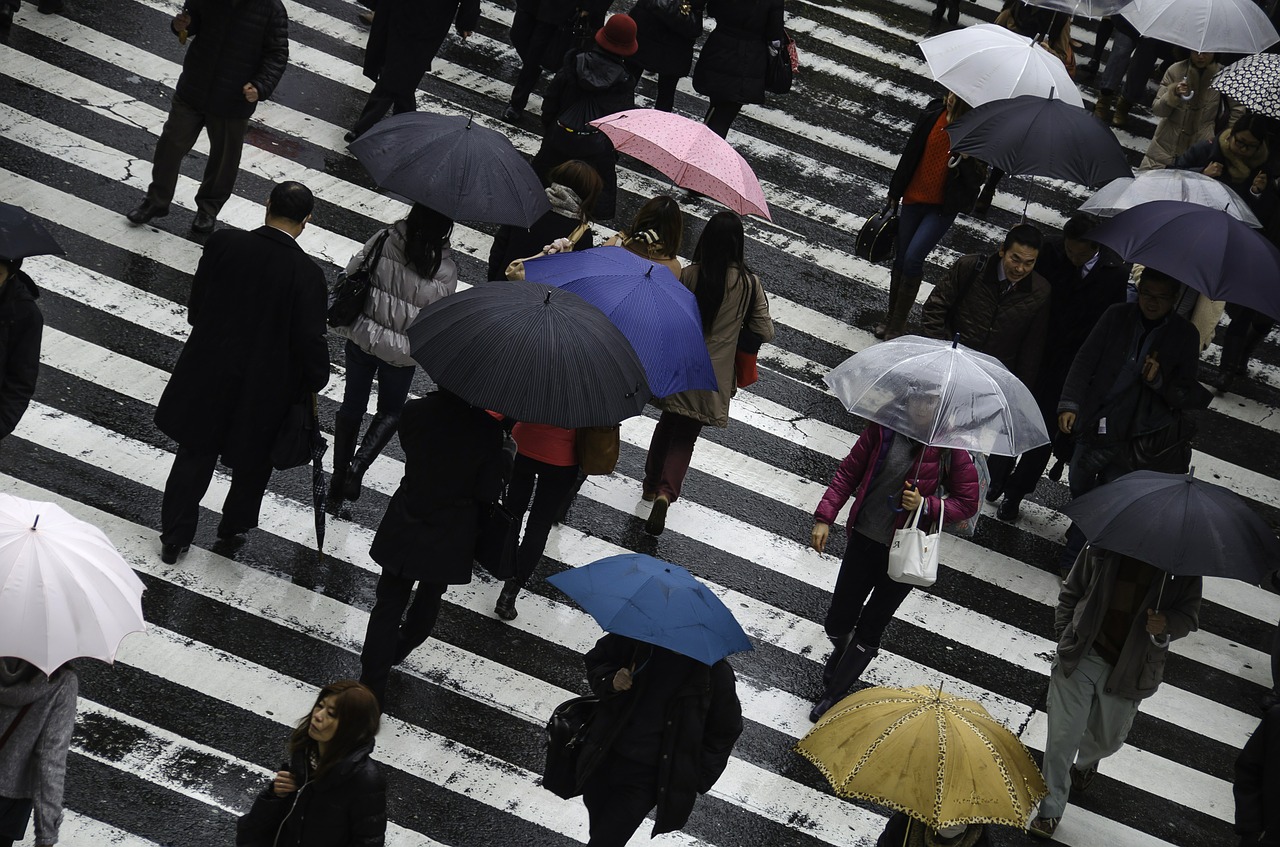Sep 30, 2019
Staying Safe from Torrential Rain
What is torrential rain?
Torrential rain refers to a large amount of rain that falls in a narrow area over several hours due to the stagnation of the rainy season front or the approach of a typhoon. Such localized heavy rains in Japan, where there are many steep mountains and rapids, cause river flooding and landslides, and there is a risk of flood damage such as flooding of buildings and flooding of roads.
Watch out for manholes on flooded roads!
Torrential rains cause damage such as inundation of urban areas, underground spaces such as subways and underground malls, and disruption of traffic functions. On the road, if a large amount of rainwater flows into the sewer pipe, the lid of the manhole may rise and come off, so you should never walk on a flooded road to prevent falling.
Underground and semi-underground may risk escaping
In the basement or semi-underground, the doors will not open due to flooding water pressure, and there is a risk of delaying escape. When lightning strikes, reinforced concrete buildings, cars (*), buses, trains, etc. are relatively safe spaces. * Open cars are not allowed
Should I not use boots during a flood evacuation?
When you evacuate while walking underwater, you should wear athletic shoes because the boots can get into the water and take off easily. Athletic shoes that can be tightened with laces or trekking shoes are easy to walk.
How to escape when a car is submerged
In case the door or window glass does not open, keep an “emergency escape hammer” within reach of the car. When opening in the JAF verification test window, it was found that the window glass could not be broken with a headrest, a plastic bag with coins, a smartphone, a vinyl umbrella, or a car key.
Protect my home from heavy rain!
Get ready for heavy rain
Fully check windows and shutters
Particular attention should be paid to window glass breakage, even during heavy rains and gusts. There is a risk that flying objects may hit the glass and be damaged by strong winds. Damage to the window glass will not only cause injuries due to glass fragments flying into the room, but also rain wind blows into the house, scattering the interior of the room, and the roof and ceiling etc. are blown by the momentum of the wind There is also a risk of endangering.
Check loose doors and screens
Regularly check the window glass for cracks, etc., and check for looseness or looseness in the shutters and screens. If there is a problem, repair them as soon as possible. If you don’t have time for repairs, you can apply gummed tape to the rattled area or reinforce it with a board or cardboard. If there is a gap in the window and rainwater enters, use newspaper or a towel.
Clear things that are likely to be skipped
Remove the blinds and the blinds on the outside of the window or on the veranda as the green curtain may be blown away by the wind. Place items that are easily blown away, such as flower pots and living utensils, in a room or storeroom. This will not only prevent damage to your home, but it will also lead to dangers such as working in a nearby house or outside, so be sure to do so.
Securing drinking and domestic water
Water pipes may be damaged due to heavy rain, or water tanks may become unusable in condominiums and apartments. In case of heavy rain, make sure to secure water for drinking water in the water tank for disaster prevention before water breaks out, or secure water for daily life by filling the bathtub. In particular, it is said that two buckets of water are needed to flush the toilet. Securing water for daily life is very important.
Being at home becomes dangerous in case of landslide disaster or flood damage. If there is a fear, start evacuation immediately. Keep emergency supplies in a rucksack so that you can take them out immediately and store them in a place where you can always take them out.
Also, if the road is inundated, or if it is more dangerous to go outside, such as a gust of wind or a tornado, a safe place such as a room on the second floor or more farthest from the mountain that may collapse in your home or nearby strong building Find and evacuate.


About the author